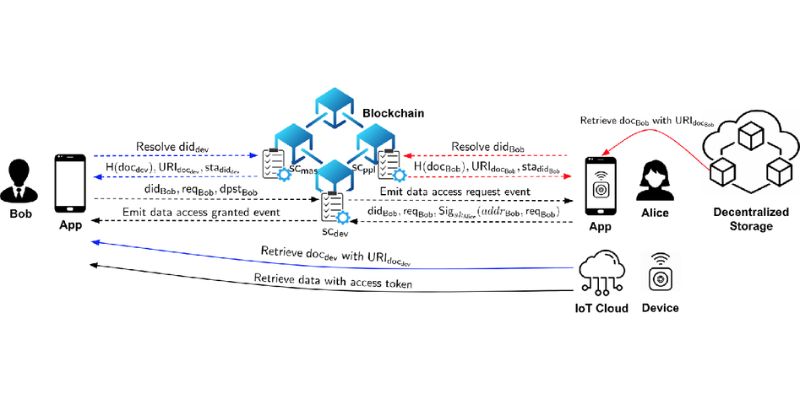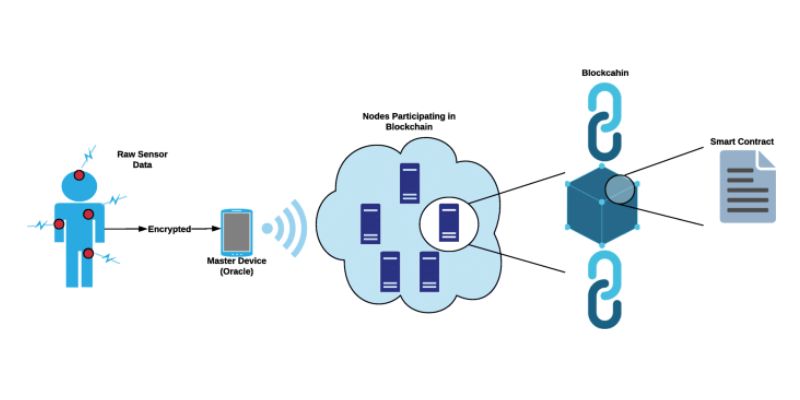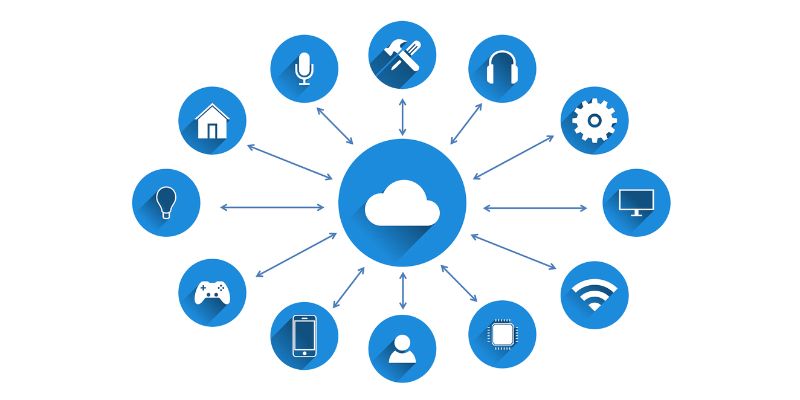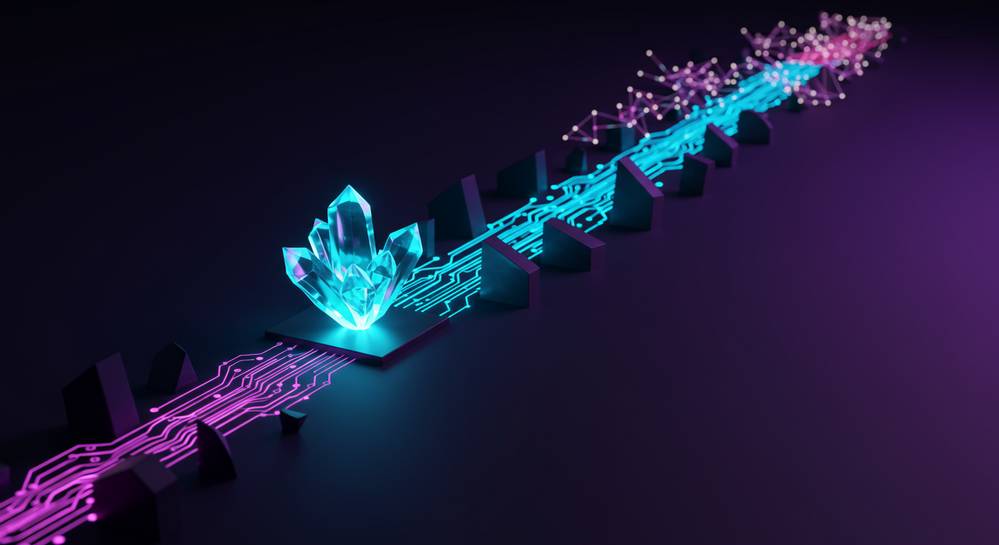Decentralized identity management in IoT with blockchain is setting the stage for a more secure IoT universe. I’ve been knee-deep in this tech, swapping insecure strings of passwords and IDs for something much harder to crack. Think of IoT devices as puzzle pieces. Now, imagine each piece knows exactly where to fit securely and can’t be shoved into the wrong place. That’s the smart, secure world blockchain is creating for our connected devices. It’s about giving power back to the pieces, not the puzzle makers. With self-owned identities, every gadget holds its own on this digital playground. Join me as I unravel how this tech is making waves and why your smart toaster might soon be savvier about its security than you are!
Understanding the Need for Decentralized Identity in IoT
Tackling IoT Identity Security Challenges
Imagine your home is smart. Your lights, TV, fridge, and even your door lock connect to the internet. Now imagine someone else taking control of them. Scary, right? It happens when bad people find ways to fake your devices’ identities. We call this “IoT identity theft,” and it’s a real problem.
To fix this, we need strong locks for our smart homes, or rather, for their identities. This is where blockchain comes in. It acts like a super-strong lock that is very hard to break. It uses special math to check every device’s “ID card” – we call this identity verification. When a device “shows” its ID, we can be sure it’s not a fake.
Embracing Self-Sovereign Identity for Connected Devices
Now, let’s talk about a big word – “self-sovereign identity.” It’s like giving your devices the power to hold their own ID cards. Instead of having to ask a “big boss” if they are who they say they are, they can prove it on their own. This power means more safety for your smart stuff.
Blockchain is perfect for this job. It writes down each device’s ID in a special book that no one can mess with. This book is called a “distributed ledger,” and everyone can check it but no one can change it alone. This way, your fridge, TV, and even your door lock can say, “I am who I say I am,” and we can trust them.
So, when all our smart things use blockchain to manage their IDs, we call this a “decentralized identity.” It means there’s no need for just one company to keep all the ID cards. This is great news because it makes things less risky. If the bad guys can’t get all the ID cards, they can’t take over our smart homes as easily.
With this tech, our privacy is better too. We don’t need to share too much info just to prove who we are or that our devices are ours. Our TV doesn’t need to tell everything about us to turn on. It just needs to show it’s part of our home.
So, what does all this mean for you and your smart home? It means safer devices and more control over who knows what about you. It means a smarter home that is truly yours, where every smart thing is sure of who it is, just like we are.

The Mechanics of Blockchain in IoT Identity Solutions
Exploring Decentralized Identity Protocols
When we talk about keeping things safe on the Internet, IoT devices pop up as a big worry. A problem we face is that hackers often try to steal the ‘identity’ of these gadgets. Decentralized identity protocols help stop that. They are like a secret handshake only your device and trusted parties know. This means each gadget gets a unique ID that is hard to fake.
Blockchain for secure IoT is a game-changer here. It works by spreading out the device info across many places. This way, bad folks can’t mess with it. Blockchain doesn’t let changes happen unless everyone agrees. Then it locks in the info like it’s set in stone.
Smart Contract Identity Management and Device Authentication
Smart contracts are really just sets of rules in a blockchain. They check identities without needing a person to do it. For IoT device identity management, this is great. It’s like having a robot guard that never sleeps. When a new device tries to join the network, the smart contract checks its secret code. If the code matches, the door opens.
Using blockchain identity authentication, a device’s identity gets checked with math, not just a password that can be stolen. Cryptographic identity verification makes sure the device is who it says it is. It’s a bit like a tamper-proof ID badge for your IoT devices.
So, how does this all come together? Let me tell you about a coffee shop I love. Each brewer and fridge is smart — they’re part of IoT. By using IoT blockchain identity solutions, they only take orders from trusted staff devices. This stops any fake orders and keeps my coffee perfect. IoT decentralized identity benefits like this go from coffee shops to factories, keeping things running smooth and secure.
Blockchain in IoT is not just a tough lock. It gives devices control over who they talk to. Identity control in IoT is like teaching your devices to avoid strangers. This helps in stopping IoT identity theft.
For big places with lots of devices, IoT identity security challenges are real. Each device needs to be brought in safely — secure device onboarding. The blockchain checks every gadget, making sure they are okay to join.
With IoT blockchain security threats on the rise, this tech gives us a strong shield. It makes sure every player in the IoT game is playing fair. Plus, as more things get connected, IoT blockchain scalability ensures it can handle growth without a drop in safety.
No one likes it when their personal stuff gets out there. With blockchain, privacy issues in IoT are less of a worry. Think of it as giving your devices a way to protect their own secrets. That’s privacy-preserving IoT identity for you.
Now, we might not stop every sneaky hacker. But, we’re building a tech fortress that’s always getting stronger. With these systems, we can trust our smart, connected world a bit more. Sure, it’s complex tech talk, but the result is simple: a safer, smarter home and world for all of us.

Practical Applications and Advantages
Blockchain IoT Use Cases for Enhanced Security
Blockchain for secure IoT is a big deal. Imagine locking your door with a phone app. But instead of just you, a whole network confirms it’s locked. That’s blockchain making sure your home stays safe. Now, let’s talk about how blockchain beefs up security for internet-connected stuff. First, decentralized identity is a powerhouse in keeping devices safe from hackers.
What is a decentralized identity? It’s like having a special ID that nobody can fake or steal. In IoT, we use this so only your smart thermostat or your TV listens to you, and no one else. Here’s where blockchain identity authentication kicks in. It’s like having a bunch of bouncers checking IDs at the door, but for your smart devices. And these digital bouncers are super tough. They check every digital ID against a blockchain to make sure it’s legit.
Next, we have IoT device identity management. Think about adding a new smart light to your home network. We call this secure device onboarding. With blockchain, adding that light to your smart home is like adding a new friend to your secret club. Everyone in the club agrees they’re cool before they get in.
Now, consider security cameras. Identity verification IoT style means only you and people you trust can peek through your cameras. No peeping Toms here.
Blockchain isn’t just for keeping out the bad guys. It’s about making everything easier and safer. Imagine every device you own knowing it’s you without asking for a password. That’s blockchain doing its thing in the background.
The Benefits of IoT Decentralized Identity Systems
Decentralized identity protocols in IoT make life simpler. They get rid of passwords and let your devices chat safely. It’s all about privacy-preserving IoT identity. You decide who knows what about you. Kind of like keeping your diary under lock and key.
Self-sovereign identity IoT is a fancy term but all it means is you’re the boss of your data. Not some company. You control who knows your name, your number, or even your favorite color. It’s all about giving you the power.
IoT decentralized identity benefits don’t stop there. We’re also talking about IoT identity theft prevention. It’s like having a super secure wallet that nobody can pickpocket. Your digital ID is super safe on the blockchain.
These systems also mean better identity control in IoT. It’s your data, your rules. And privacy issues in IoT? Way less scary with blockchain. It’s like having a secret handshake that only your devices know.
Digital identity management with blockchain is smart, too. It uses things called smart contract identity management. These are like tiny robot lawyers making sure every deal goes down right. No funny business.
All in all, blockchain and IoT are best buddies when it comes to keeping you secure. It’s about making sure that when you tell your house to lock up or your car to start, it’s just as safe as having the keys in your hand.

Building Trust and Compliance in IoT Ecosystems
Advancing Data Integrity and Identity Data Protection
In the world of IoT, keeping data safe is key. Think of blockchain as a super-secure lockbox. It keeps all the identity data of devices locked away safe. This stops bad guys from messing with our stuff. No one wants a stranger to take over their smart home, right?
To make sure data is honest and true, we use blockchain for secure IoT. This means when a device says it’s something, blockchain checks if that’s true. It’s like a digital ID check-up. Now, people can trust their devices more. Plus, the info is spread out, not just in one place. This way, if one spot gets hit, the whole system won’t fall down.
For keeping our digital IDs locked down, blockchain identity authentication is our friend. It’s like having a super-secret handshake that only your devices know. When your fridge talks to your phone, they use that handshake. If someone doesn’t know the handshake, they can’t join in.
Navigating Identity Control with Interoperable Frameworks
Now, we don’t want our devices to get stuck speaking one language. That’s where interoperable identity frameworks come in. Think about when you play with friends. You have rules so everyone can play together, right? Interoperable frameworks are the rules for devices. They let different brands and types work together, like legos from different sets.
By using self-sovereign identity IoT, we put control back in our hands. It’s saying, “This device is mine, and I say who it talks to.” So, your watch doesn’t share your steps unless you say it’s okay. We set the rules, not someone far away in a big office.
Having smart contract identity management helps too. It’s like having a robot referee that makes sure all devices follow your rules. If a device tries to cheat, the smart contract says, “No way!” This keeps everything running smooth and safe.
Blockchain IoT use cases show how this can stop bad stuff before it happens. Like if someone tries to add a fake device to your home network. The blockchain checks and says, “I don’t know you, so you can’t come in.” It’s great for stoping people from stealing your device’s identity.
Making all this work right is tough but worth it. We want our stuff to work together without worry. By using blockchain in IoT, we build trust and keep our digital world safe. Just like in a team, everyone has to play fair, or the game’s no fun. Blockchain is our way to make sure everyone plays fair.
In short, our IoT toys are getting smarter and safer, thanks to blockchain. And that’s something we can all feel good about. As we connect more and more, let’s keep building this trust and safety together. It’s the smart move for our smart world!
In this post, we’ve explored the critical role decentralized identity plays in IoT. We looked at how it tackles security woes and lets devices own their data. We then dived into blockchain’s nuts and bolts, aiding IoT with protocols and smart contract management. We also eyed real-world uses that boost security and the perks of this tech shift.
Most notably, we tackled how these mechanisms foster trust and meet legal standards while protecting data truth and letting systems work together smoothly. All these elements show that decentralized identity in IoT isn’t just smart—it’s a must for secure, autonomous, and efficient device networks. By embracing this, we step into a future where devices interact with solid trust and clear control over their identities. Here’s to crafting a safer IoT world.
Q&A :
How does blockchain enhance decentralized identity management in IoT?
Blockchain technology provides a robust, secure platform for decentralized identity management in IoT by leveraging its distributed ledger capabilities. This helps ensure that device identities are tamper-proof and verifiable across a network, without the need for a central authority, enhancing privacy and security.
What are the benefits of using decentralized identity management for IoT devices?
Decentralized identity management systems, when implemented in IoT devices, can offer various benefits including enhanced security, improved privacy, reduced risk of identity theft, and seamless peer-to-peer communication. Additionally, it facilitates better management of device lifecycles by maintaining immutable and verifiable records of device identities and activities on the blockchain.
Can blockchain resolve scalability issues in IoT identity management?
Blockchain can potentially address some scalability concerns in IoT identity management by facilitating secure, direct authentication between devices without overloading centralized servers. However, blockchain itself faces scalability challenges; thus, scalability solutions like sharding, off-chain transactions, and sidechains are often proposed to handle vast numbers of IoT devices.
How do smart contracts work within decentralized IoT identity management?
Smart contracts are self-executing contracts with the terms of the agreement between devices directly written into code. Within decentralized IoT identity management, smart contracts automate the process of verification and authentication, enabling devices to make trustful, autonomous decisions and interactions based on predefined rules, without human intervention.
What challenges face decentralized identity management in IoT using blockchain?
Despite its advantages, decentralized identity management in IoT using blockchain faces challenges such as technology integration complexity, the need for standardization, high energy consumption, and ensuring interoperability among different IoT platforms and devices. Addressing these issues is essential for the successful deployment of blockchain in IoT identity management.



